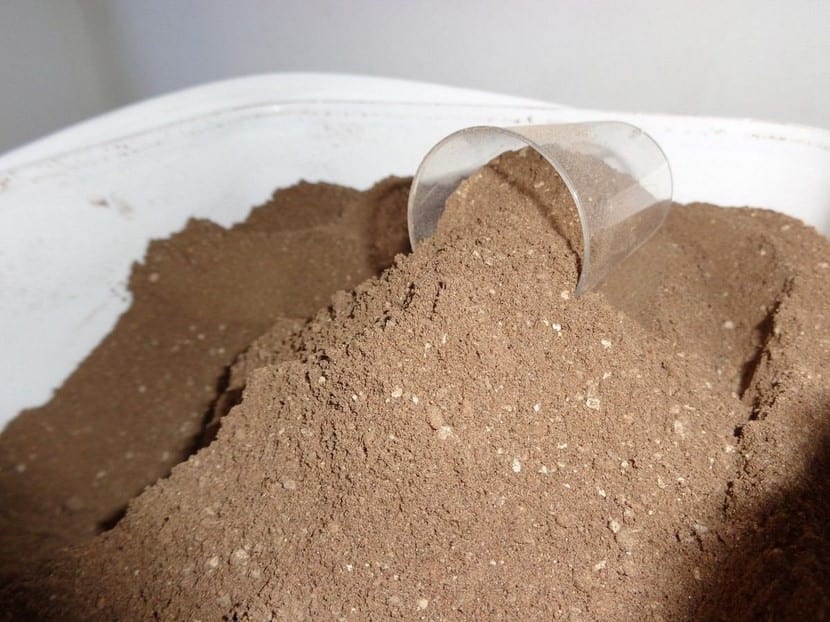
Festuca glauca 'Intense Blue'
The Festuca glauca is one of the few herbaceous plants that is really loved in a garden. Its elongated and thin bluish leaves are very beautiful, but it also tolerates both treading and cutting without problems.
Her growth rate is very fast, so we won't have to wait long for her to become an adult and look even prettier than she already is when she is young. Would you like to know what their cares are?
Origin and characteristics

Our protagonist is a grass native to Europe whose scientific name is Festuca glauca, although it is popularly known as blue fescue, blue castanet, lastón or cañuela. It is characterized by having linear leaves up to 30 cm high and very thin, barely 0,5 cm wide, with a color that varies from silvery white to bluish gray. The blue spike-shaped flowers have no ornamental value, as they are insignificant. In any case, they appear in summer.
There are different cultivars, including:
- Blaufuchs: which has very beautiful bright blue leaves.
- Blausilver: which has the leaves of an intense silvery blue.
- Elijah Blue: which has almost whitish blue leaves.
What are their cares?

If you want to have a copy, we recommend that you provide it with the following care:
Location
We have to place it outside, in full sun. It does not grow well in semi-shade or indoors, unless it is in a very bright indoor patio.
Earth
- Flower pot: universal culture substrate mixed with perlite in equal parts.
- Garden: grows in all types of soils as long as they are dry and have good drainage.
Irrigation
It is a plant that resists drought well, so watering should be minimal. Usually we will water once or twice a week in summer and every 7-10 days the rest of the year. Anyway, in case of doubt you have to check the humidity, and for that we can do the following:
- Insert a thin wooden stick to the bottom: if when you extract it, it comes out with a lot of adhering soil, we will not water.
- Use a digital humidity meter: when you enter it, it will tell us what degree of humidity is that portion of earth that has come into contact with it. To make it more reliable, it is advisable to introduce it in other areas of the pot or soil (closer to the plant, further away).
- Weigh the pot once it has been watered and again after a few days: as wet soil weighs more than dry soil, this difference can serve as a guide to know when to water.
Subscriber

Guano powder.
As important as watering well, it is necessary to fertilize the plants, since if we only gave them water, their growth rate would slow down and their health would deteriorate. In the case of Fescue glauca, We will pay it throughout the spring and summer with ecological fertilizers, using liquids if potted.
Pruning
Don't need it; Now, to make it look pretty, you have to remove the dry and diseased leaves.
Multiplication
La Fescue glauca it is multiplied by seeds or by division. Let us know how to proceed in each case:
Seeds
It multiplies by seeds in spring or autumn, following this step by step:
- The first thing to do is fill a seedbed (it can be a pot, milk container, glass of yogurt, ... anything that has or can make holes for drainage) with universal culture substrate.
- Afterwards, we water conscientiously, so that the substrate is well moistened.
- Then, we place the seeds on its surface, ensuring that they are a little separated from each other and not putting too many in the same pot. Ideally, put a maximum of 3 or 4 in each one so that they can grow well.
- They are then covered with a thin layer of substrate and watered again, this time with a sprayer.
- Finally, the seedbed is placed outside, in full sun.
Thus, they will germinate in 2 weeks.
Division
It is multiplied by division in spring or fall, every 2 or 3 years. To do this, you simply have to remove it from the pot and with a serrated knife previously disinfected with pharmacy alcohol, cut it in half.
In the case that it is on the ground, we will make some ditches around 30cm, and with a knife or a small hand saw we will cut.
Planting or transplanting time
La Fescue glauca can be planted in the garden in spring, as soon as the risk of frost has passed. If it is in a pot, you have to transplant it every 3 years.
Rusticity
It resists cold and frost well, so it can be grown outdoors all year round in temperate climates. Only if it falls below -9ºC will you need protection.

Festuca glauca 'Elijah Blue'
What did you think of Fescue glauca? Did you know her?